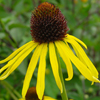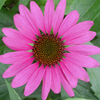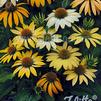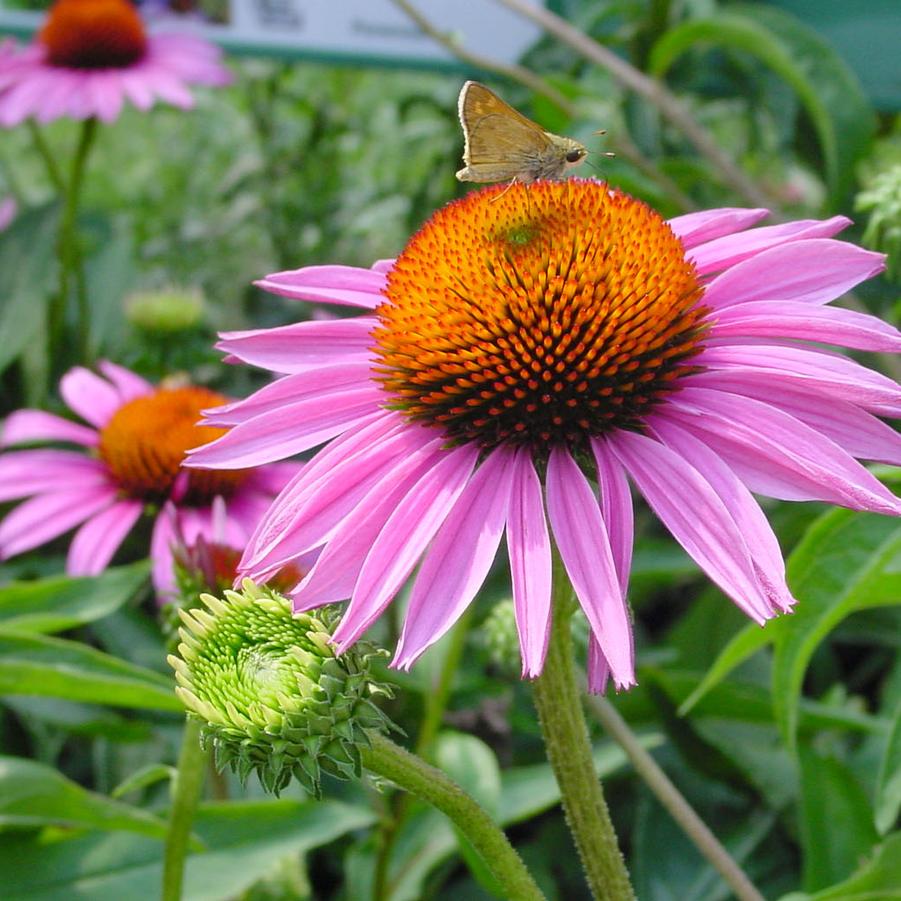
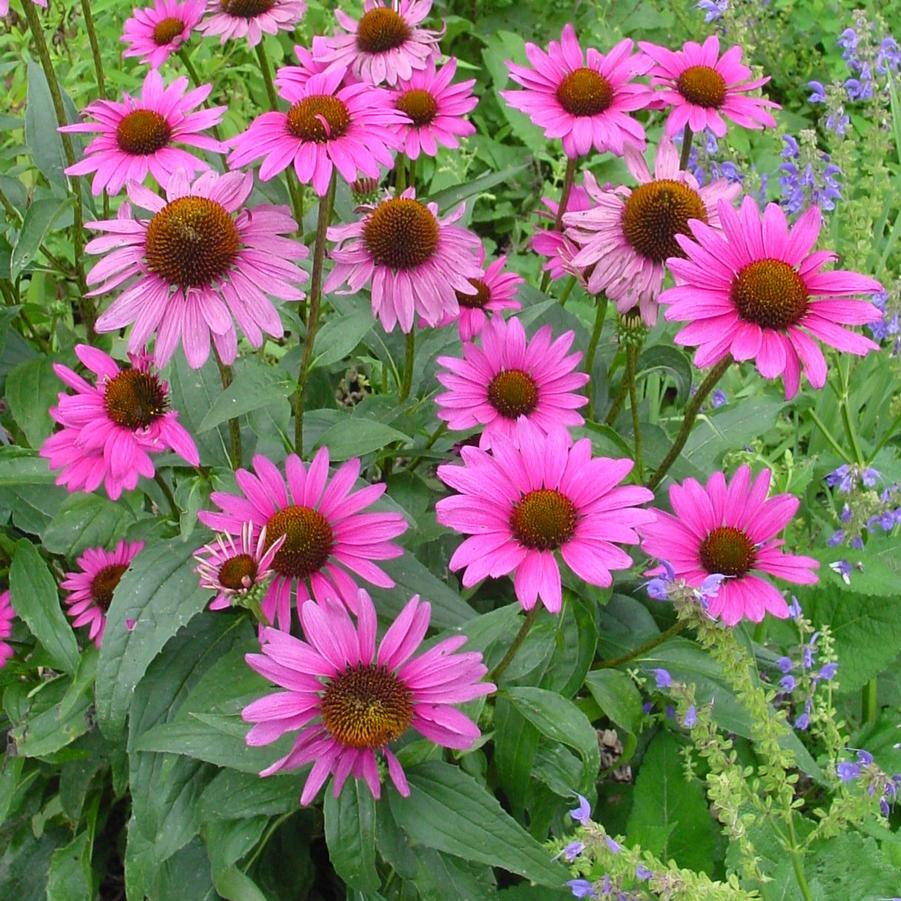


Plant Calculator
Enter the approximate length and width of the area you will be planting and click 'Calculate' to determine how many Echinacea purpurea 'Ruby Star' you will need.
Correct and successful spacing is complex and depends on project conditions. We encourage you to call us at 877-ECO-PLUG for project specific recommendations and further assistance.
Echinacea purpurea 'Ruby Star'
purple coneflower
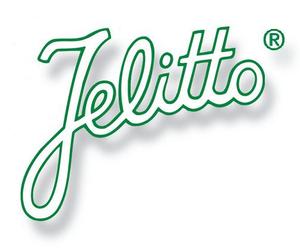
- Category: Perennial, Native
- Breeder: Jelitto Perennial Seed
- Hardiness Zone: 3-8
- Height: 2-3 Feet
- Spread: 18-24 Inches
- Spacing: 12 Inches
- Bloom Color: Violet
Introduced by Jelitto, who gave us 'Magnus', Echinacea 'Ruby Star' is a slightly shorter plant with large flat topped flowers that are a deeper purple pink, almost ruby red, than most others. Plants are easy to grow, tough, and heat and drought tolerant once established. Their roots have famous medicinal qualities, they make great, long lasting, cut flowers and attract numerous butterflies and small birds.
Click here to download technical information for growers:
Green Infrastructure
| • | Green Roof |
Season of Interest (Flowering)
| • | Summer |
Propagation Type
| • | Seed cultivar |
Additional Information about Echinacea purpurea 'Ruby Star'
Introduced by Jelitto in 2000, who gave us Echinacea purpurea 'Magnus', Echinacea purpurea 'Ruby Star' is a slightly shorter 2-3’ plant with large flat topped flowers that are a deeper purple pink, almost ruby red, than most others varieties. It is an improvement on ‘Magnus’ and thought to be one of the best Echinacea purpurea on the market. The plants are easy to grow, tough, and heat and drought tolerant once established. Everything from the flower to the root of coneflower is enjoyable with their roots famous for their medicinal qualities and their flowers creating long-lasting arrangements.
Ranging from Texas to New York, Echinacea purpurea can be found in moist prairies, meadows and open woods. As popular as they are in the landscape, coneflower is uncommon in the wild. They prefer full sun in fertile well-drained soil but one of the best features of Echinacea is the way it is able to tolerate drought, clay, high heat and humidity, part sun, and poor soils.
The flowers of coneflower provide multiple seasons of interest from summer while it blooms to fall and winter where the great seedheads are upright and structural. Butterflies and bees love the nectar of the flowers and goldfinches can’t help but flock to the seeds during the fall. As more cultivars of Echinacea are released on the market, we trial them in our side by side comparison trials to evaluate their merits and colors and durability against a hundred others– ‘Ruby Star’ was a clear winner.
Growing & Maintenance Tips for Echinacea purpurea 'Ruby Star'
Go easy on fertilizer, especially in production, as the resulting quick growth seems to make the plant more susceptible to disease.
Echinacea take a wide array of conditions from average dry soil to medium, well-drained soil in part shade to full sun. Plant flowers best in full sun. Low-maintenance and tolerates drought, humidity, heat, poor soil. Resistant to pest and disease but sometimes suspectible to aster yellows disease. To encourage longer bloom time, flower heads can be deadheaded but not necessary. Seedheads are a delightful source of food for birds. To propogate, divide clump in the spring every 4 years. Root cuttings are also successful. Propogation by seed does not usually come true to type.


